Abstract
1. Measurements have been made of the flexibility and respiratory efficiency of erythrocytes stored in acid-citrate-dextrose (ACD).
2. The rate of packing of stored blood, during centrifugation, indicates that the red blood cells are relatively inflexible.
3. Spectrophotometric observations, using the rapid-mixing and stopped-flow technique, indicate that the rate of egress of oxygen from HbO2 in these erythrocytes is significantly reduced. This is not due to a change of the chemical rate of dissociation of HbO2.
4. Neither factor is significantly reversed by resuspending the cells in Ringer-Locke solution or adjusting to pH 7·4.
5. A small improvement is obtained by adding hypertonic NaCl or incubating the blood at 37° C for 1 hr.
6. Incubation with adenosine, 25 μ-mole/ml. blood, at 37° C for at least 1 hr, restored both the respiratory function and flexibility to normal.
Full text
PDF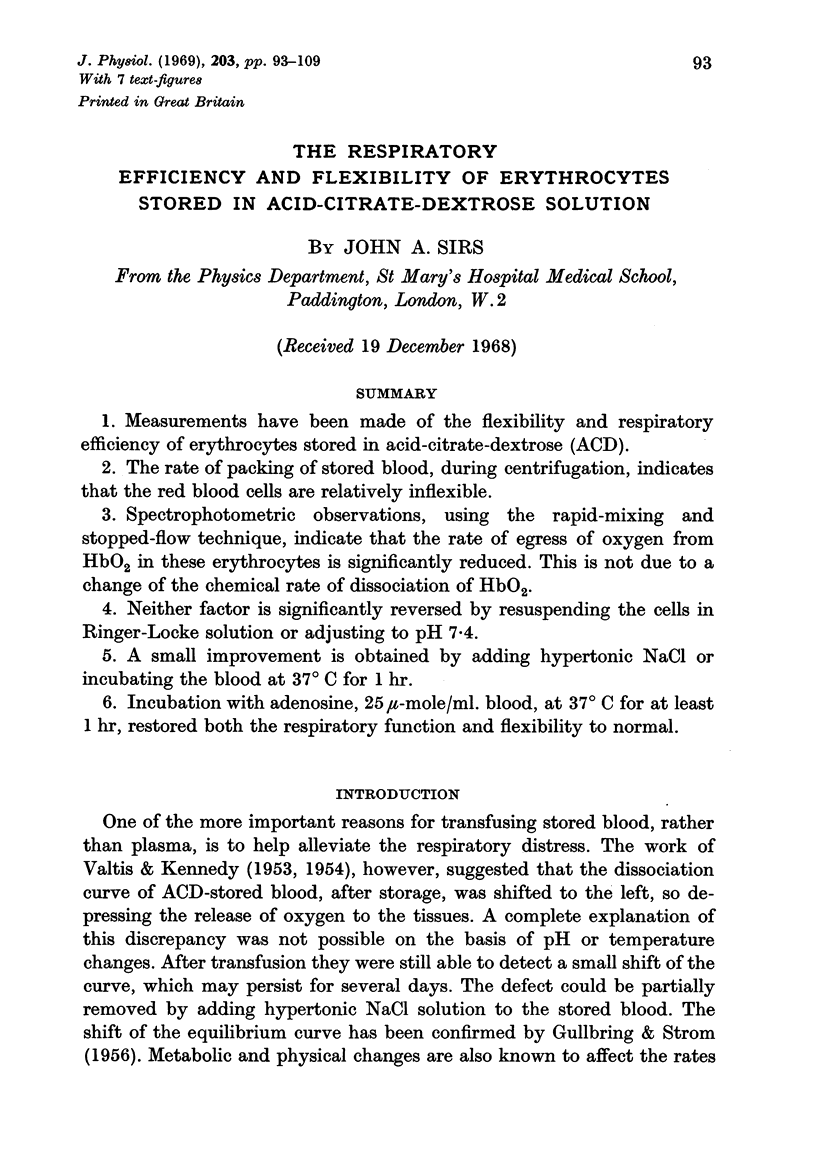
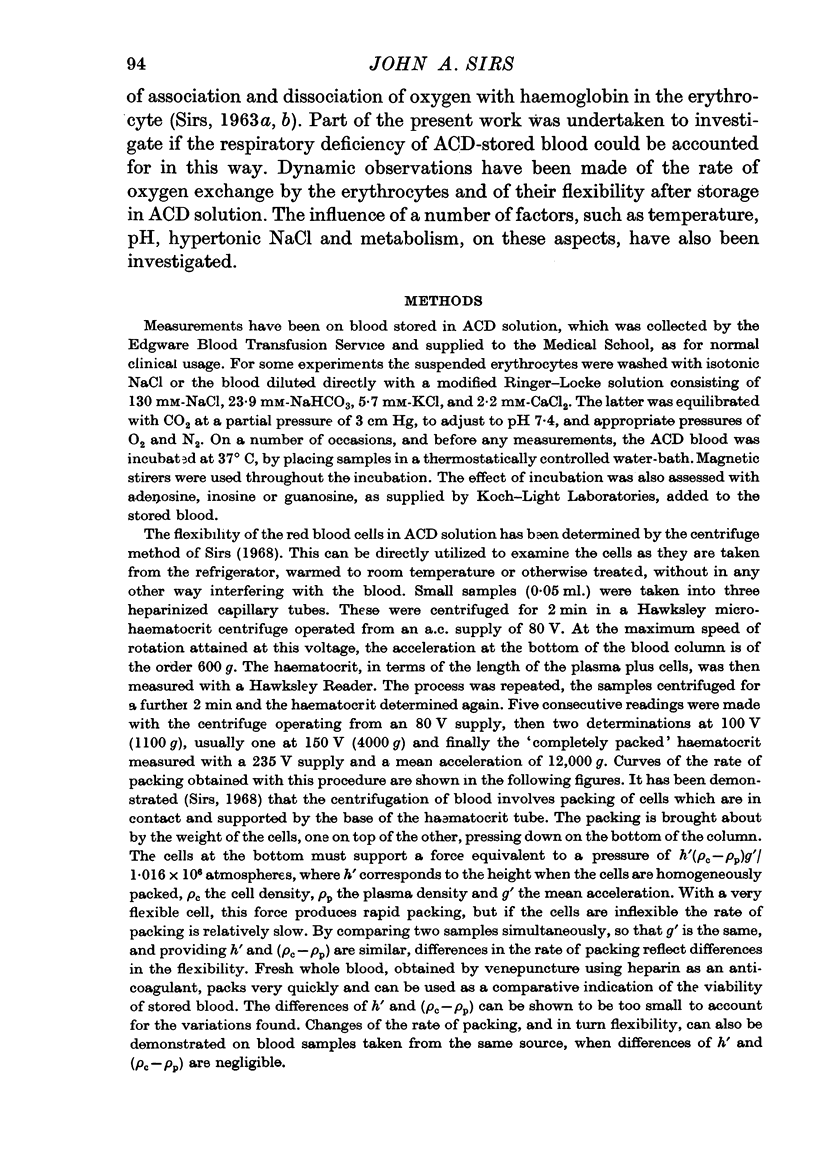
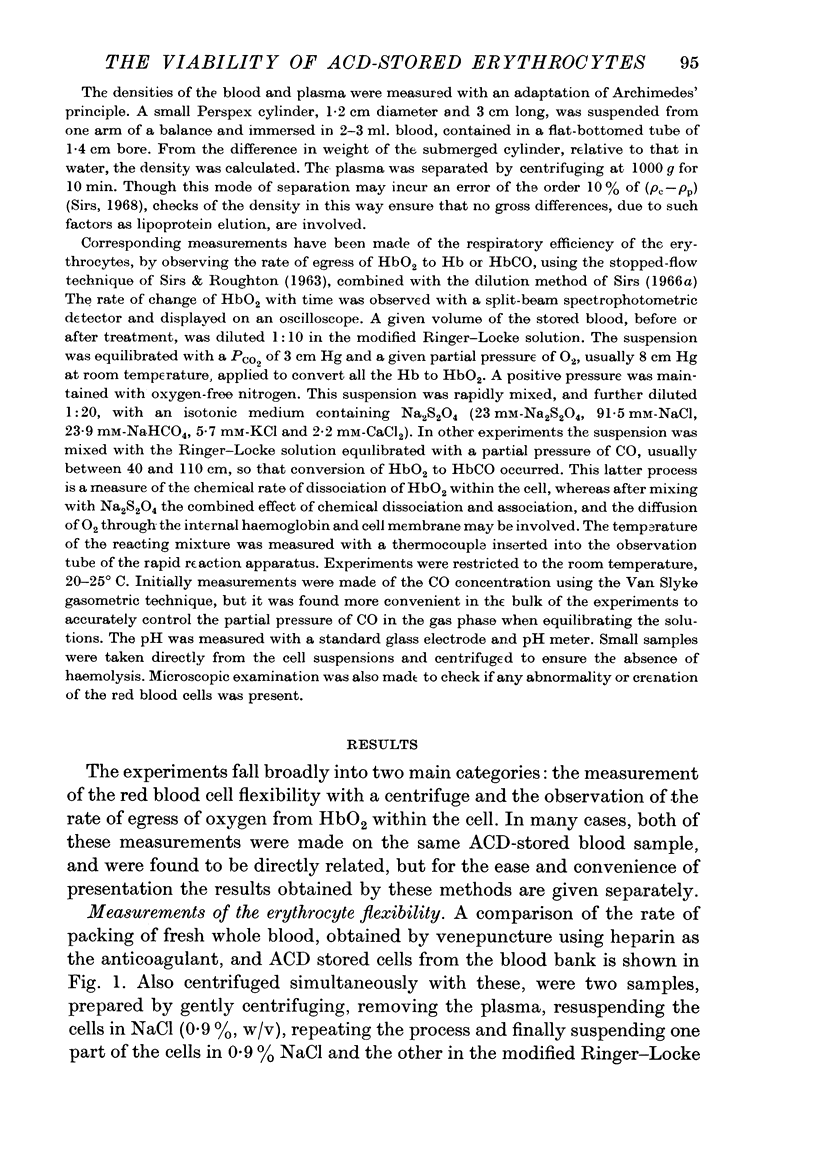

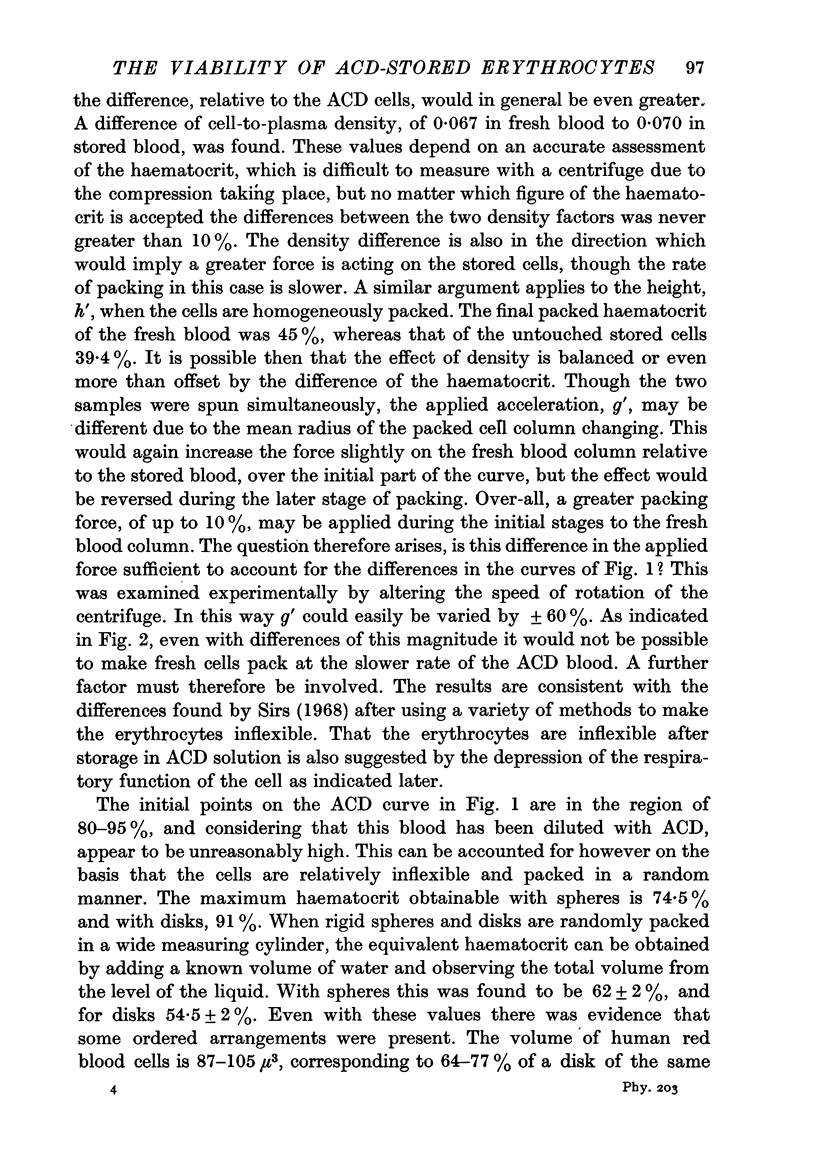
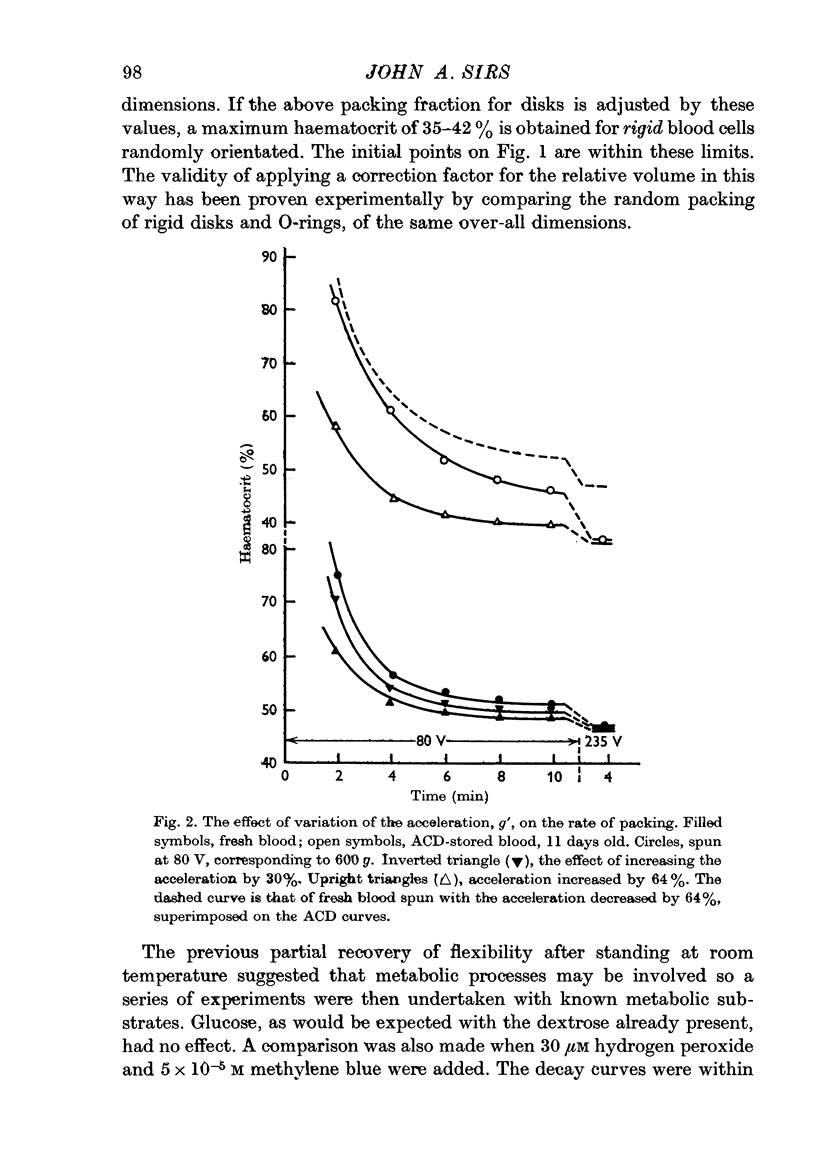
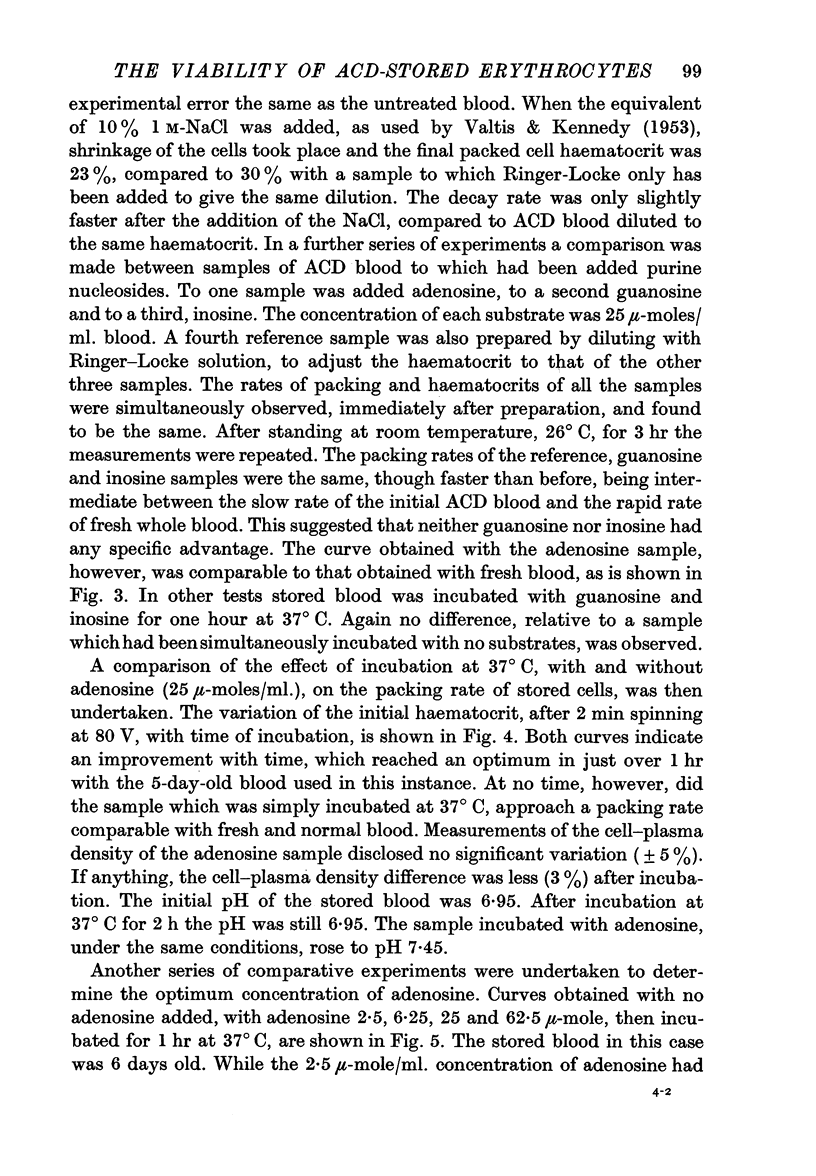
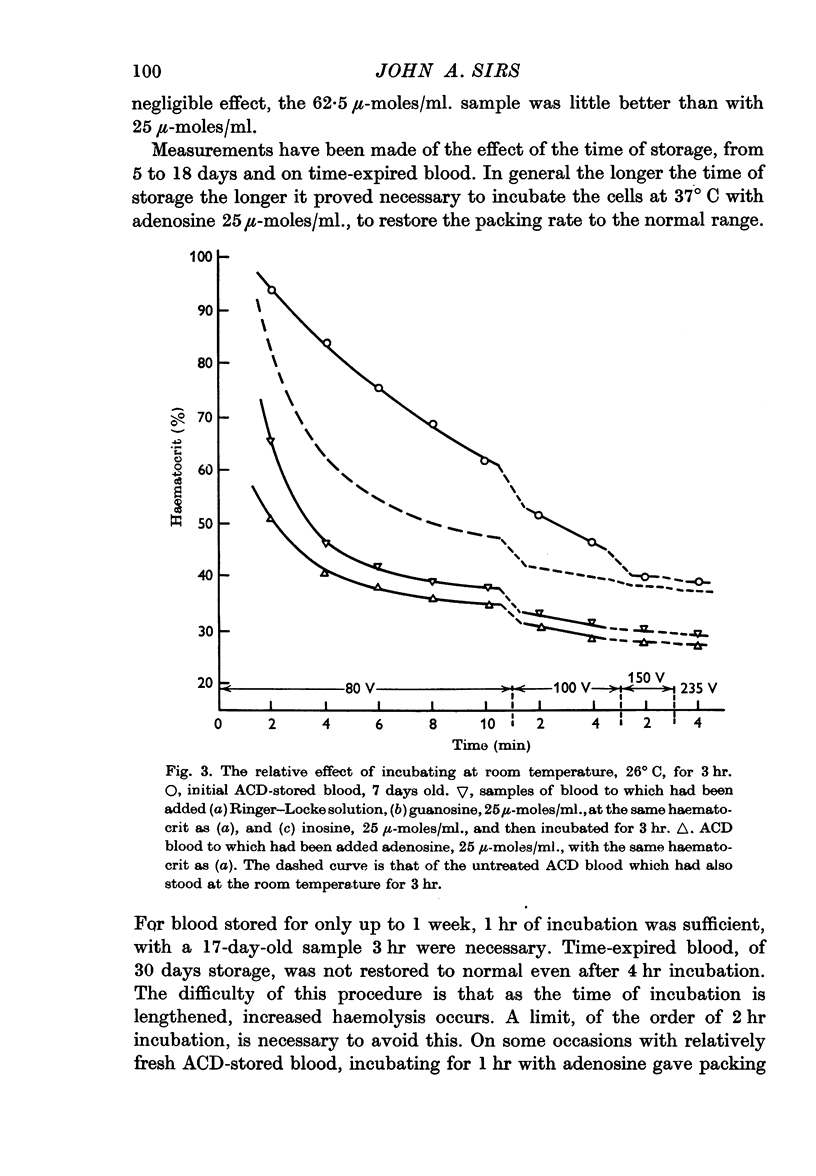
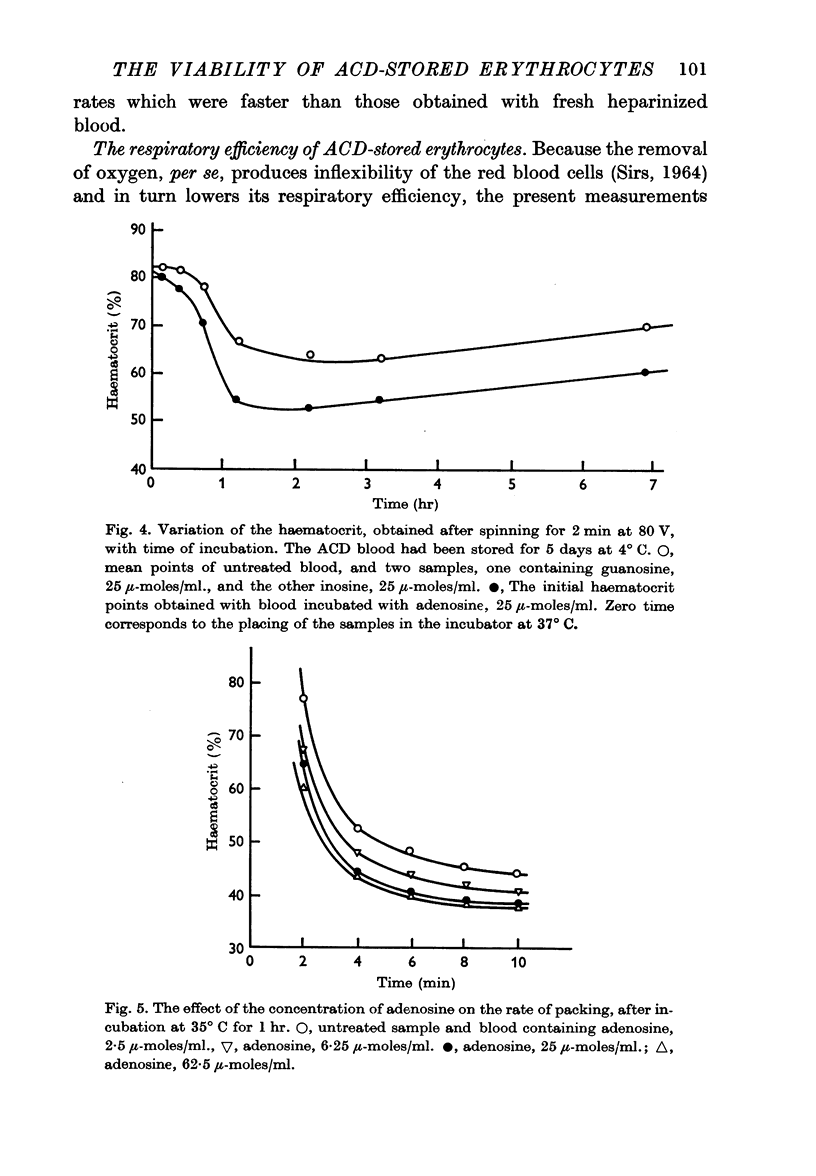
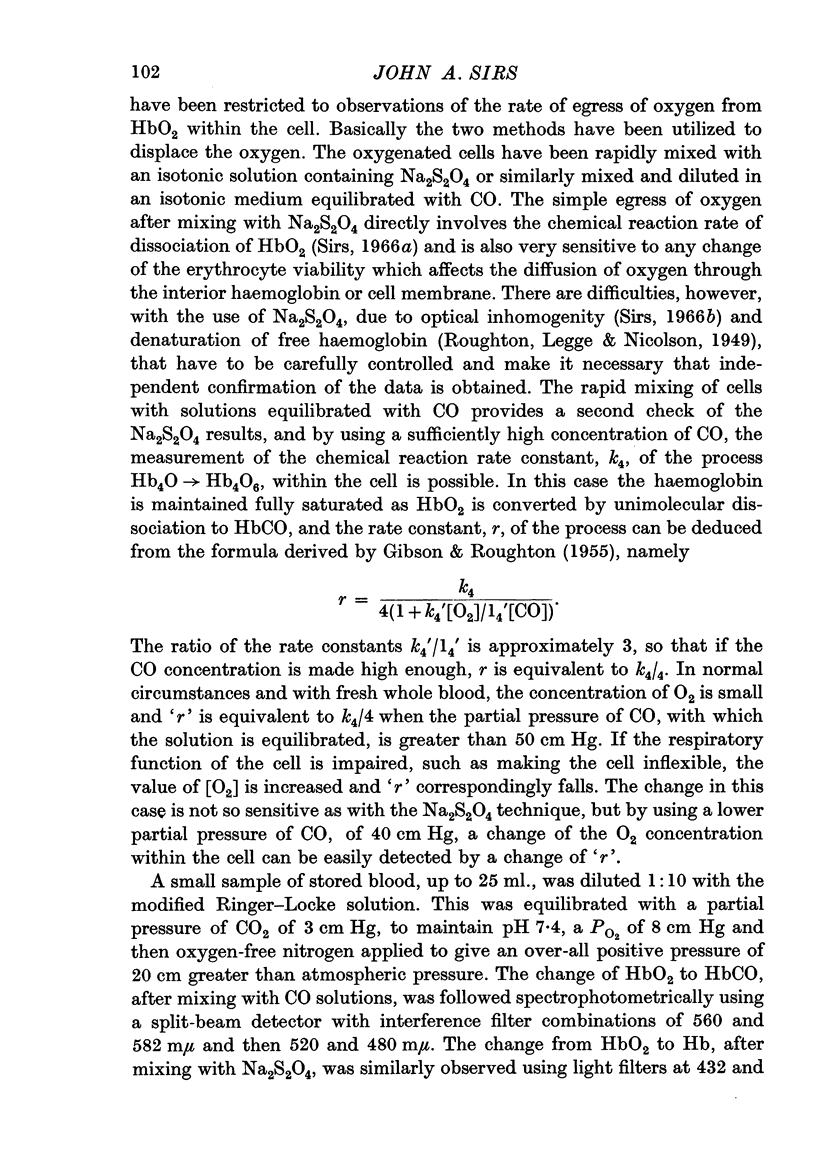
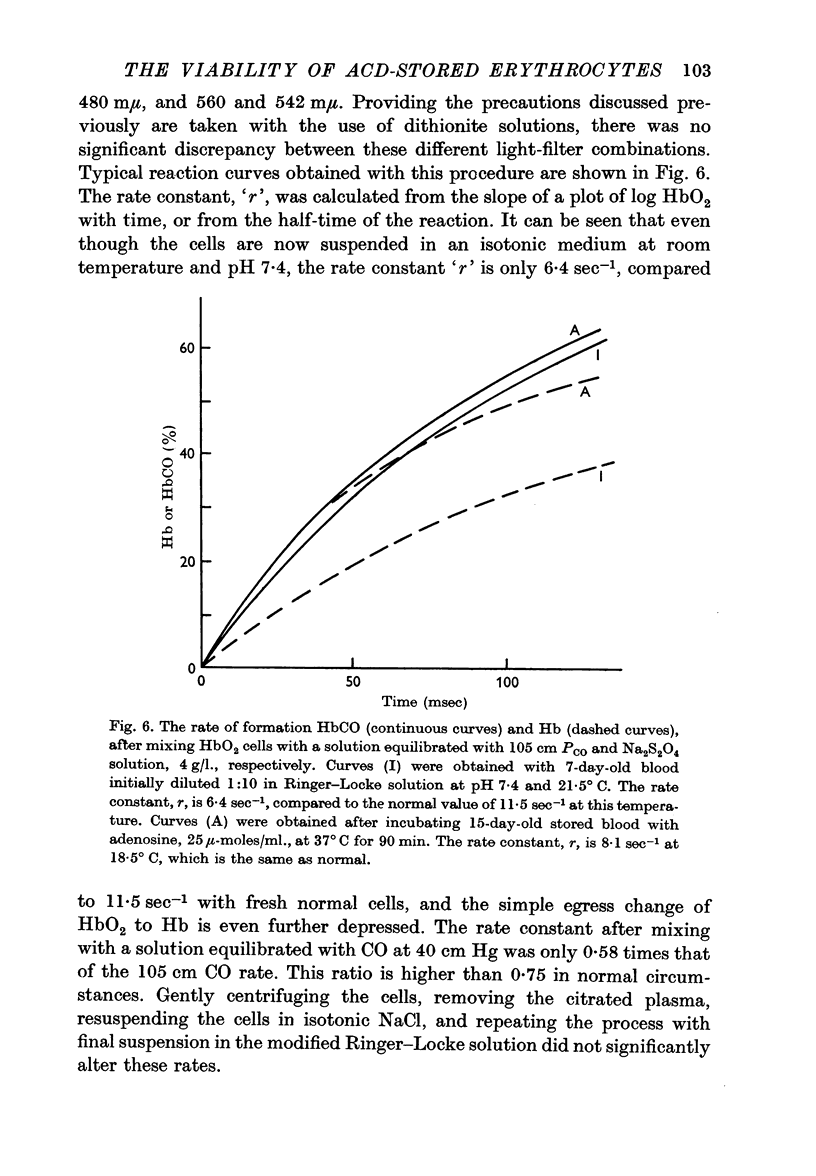
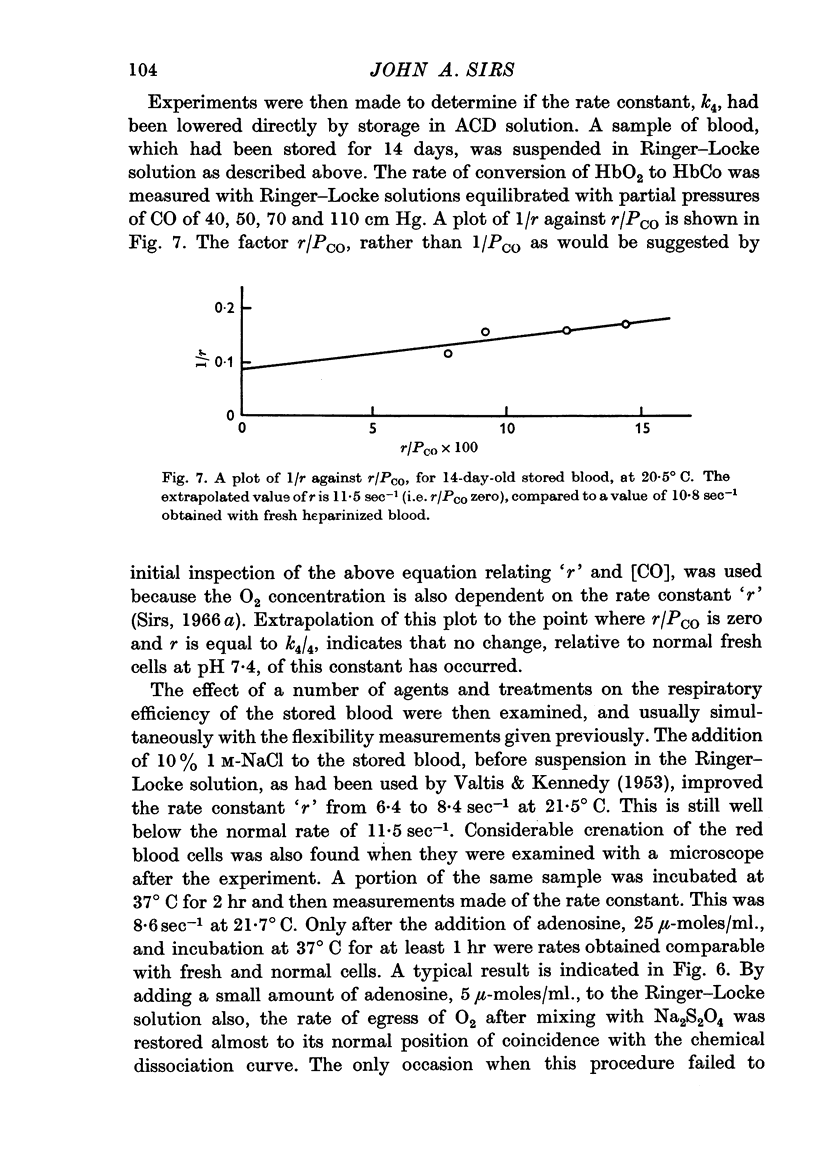
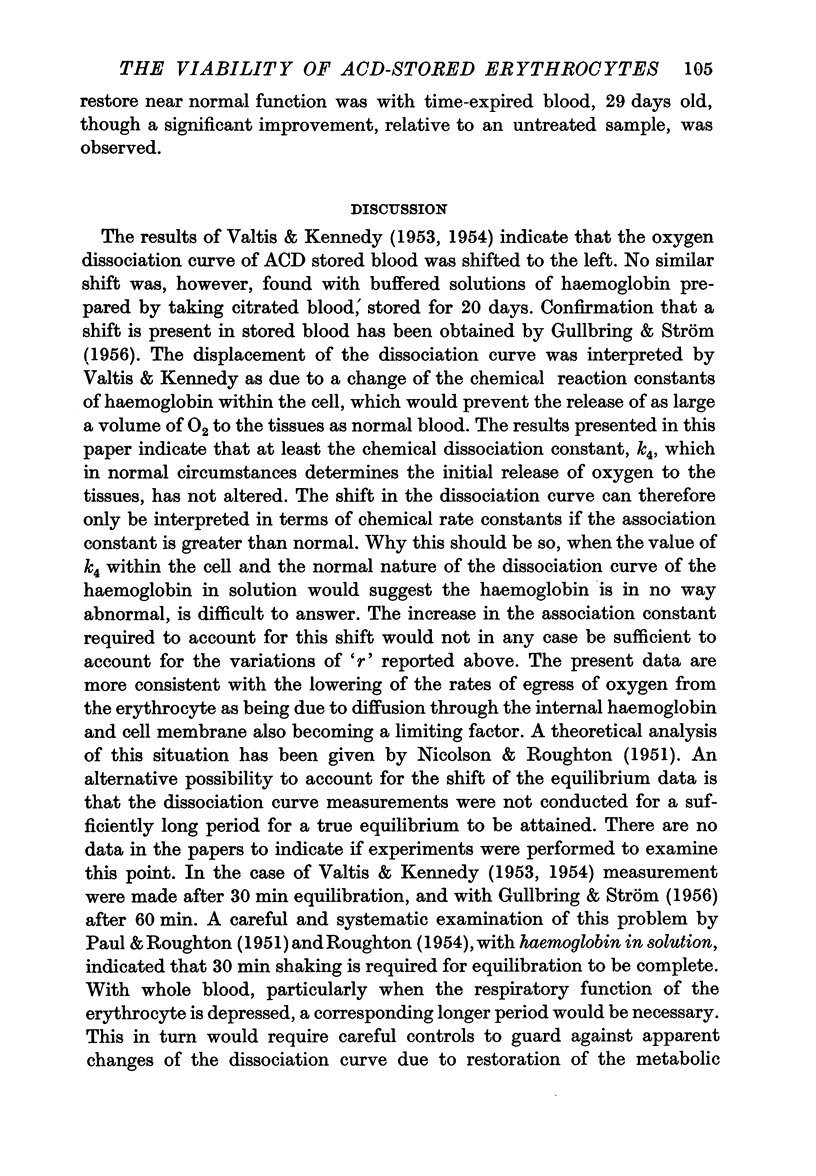
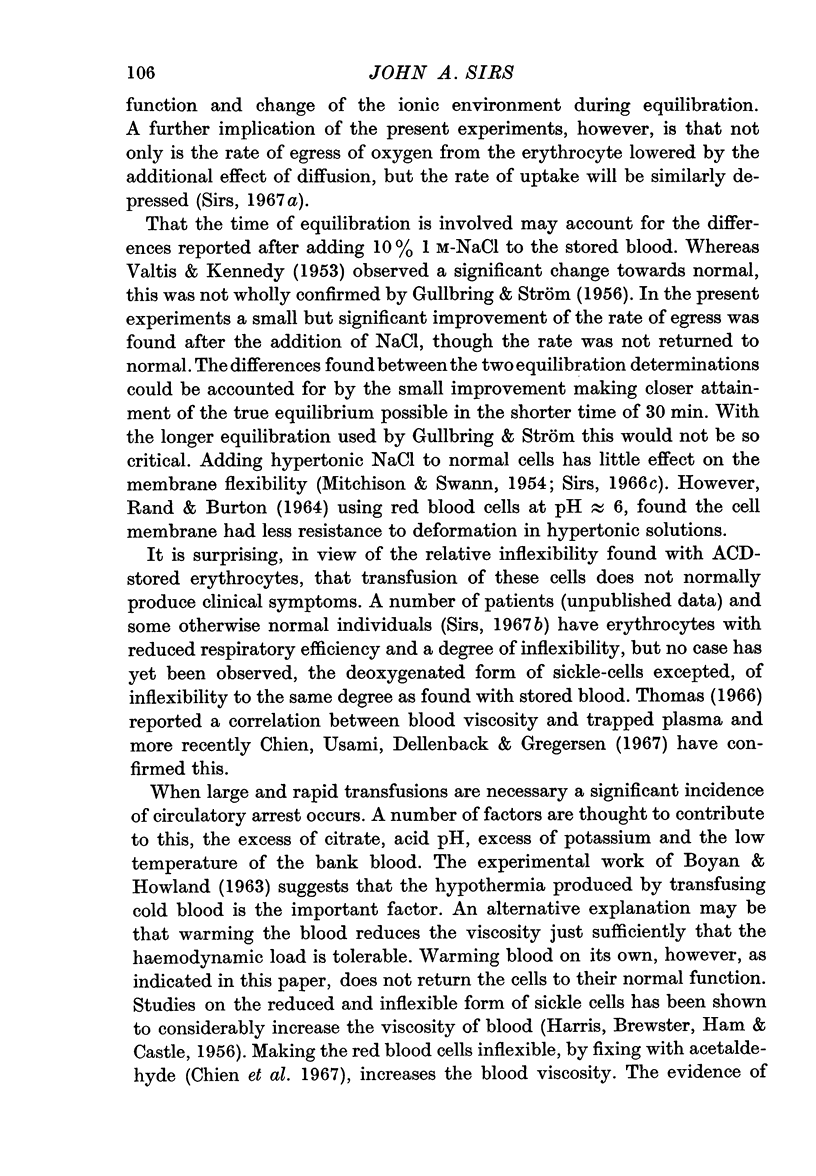
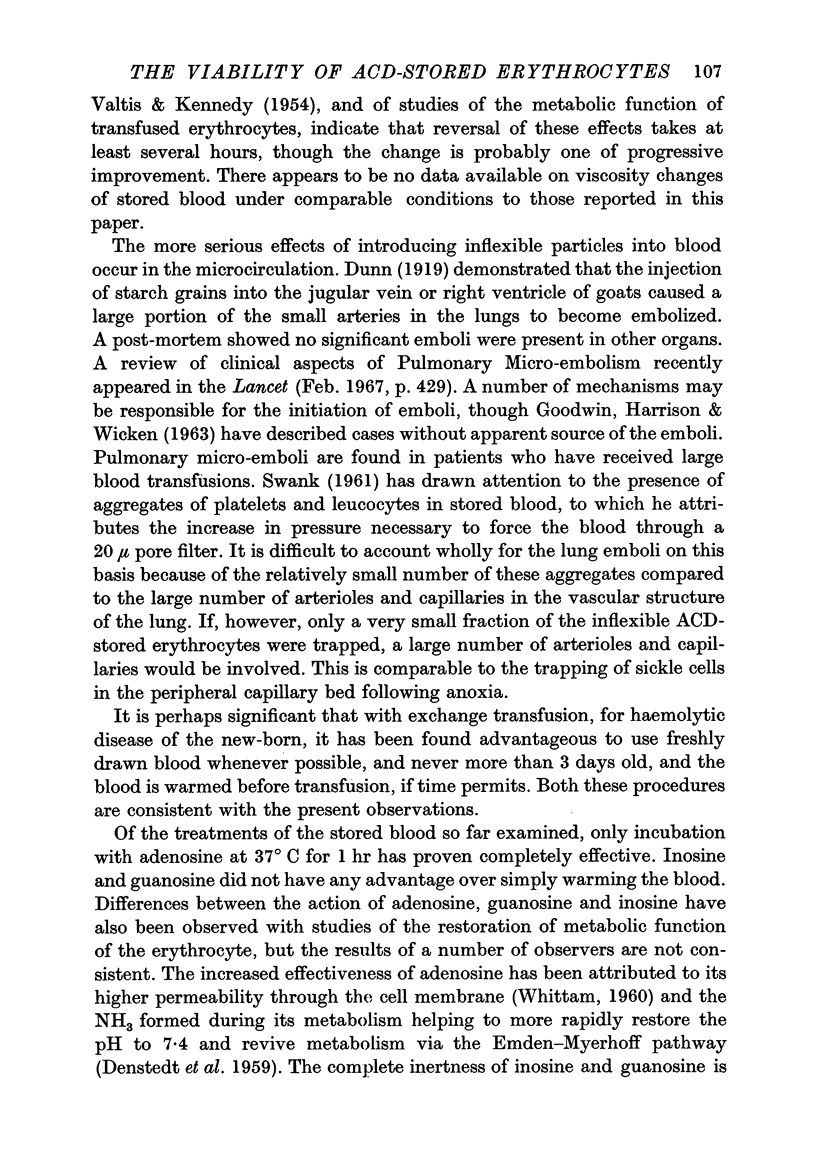
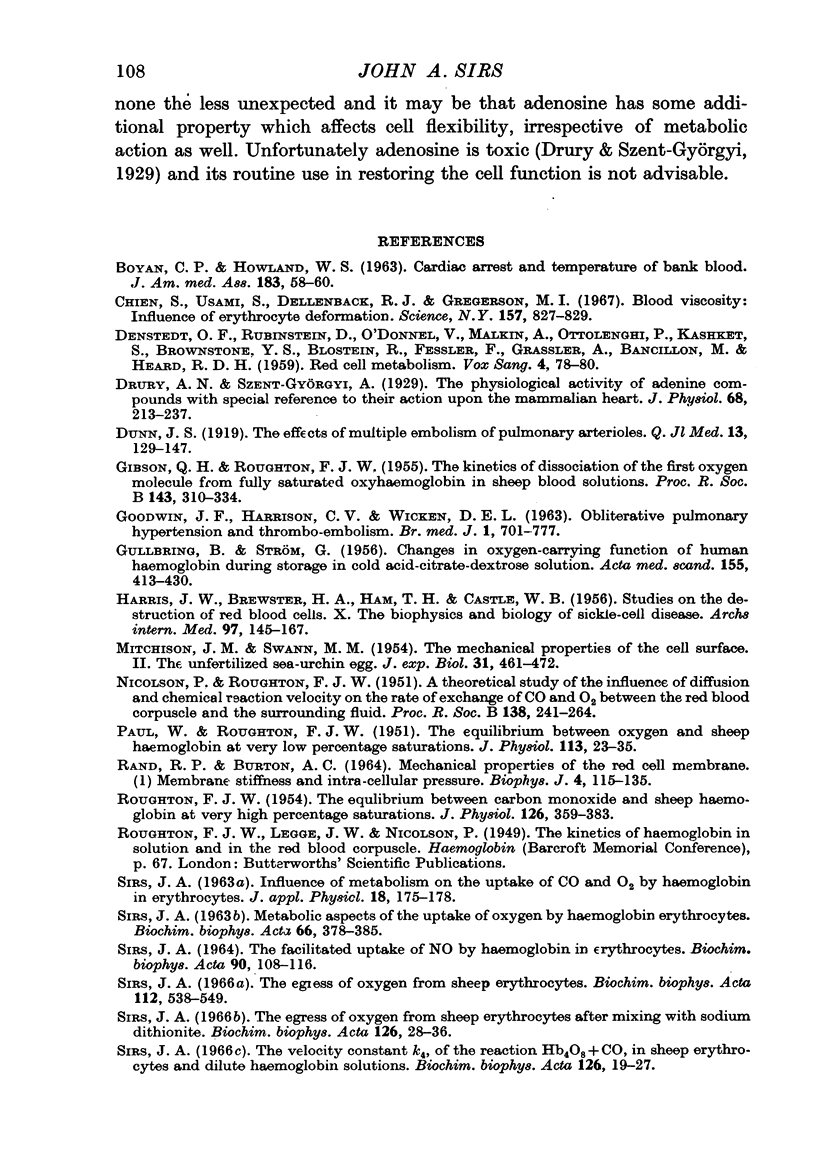
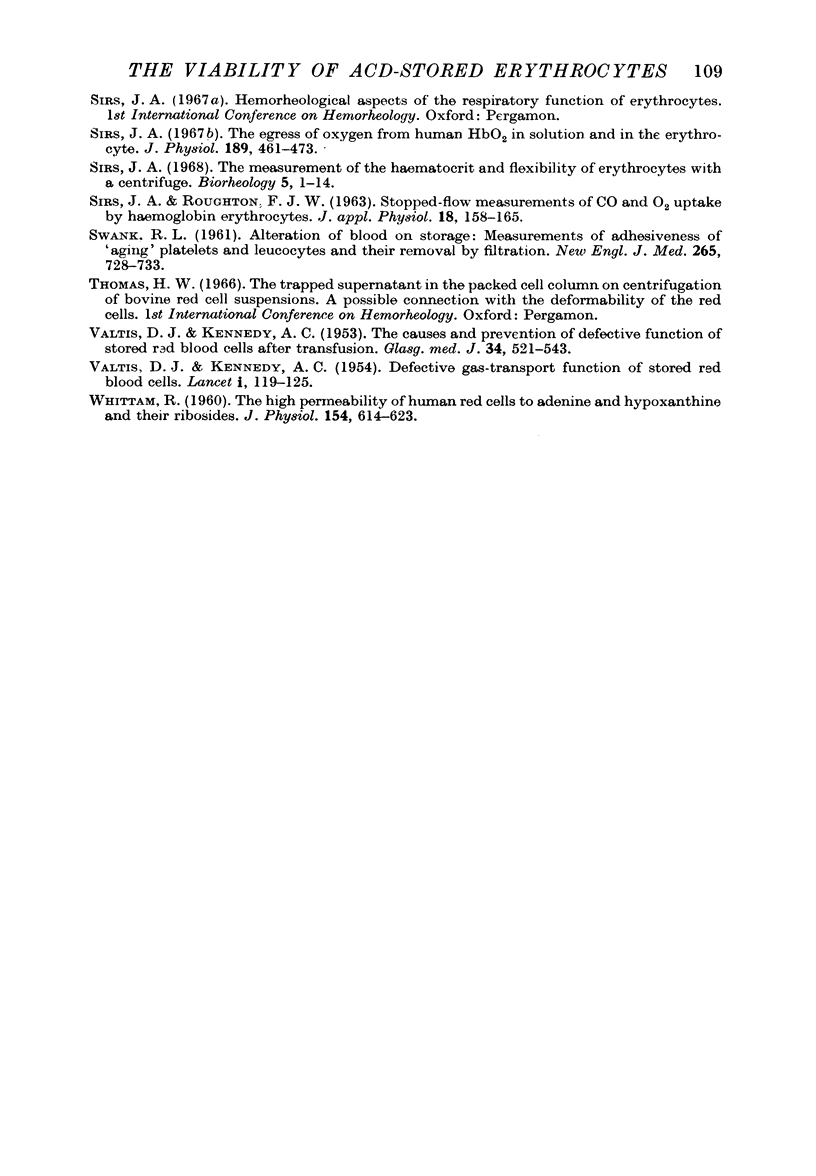
Selected References
These references are in PubMed. This may not be the complete list of references from this article.
- BOYAN C. P., HOWLAND W. S. Cardiac arrest and temperature of bank blood. JAMA. 1963 Jan 5;183:58–60. doi: 10.1001/jama.1963.63700010027020. [DOI] [PubMed] [Google Scholar]
- Chien S., Usami S., Dellenback R. J., Gregersen M. I. Blood viscosity: influence of erythrocyte deformation. Science. 1967 Aug 18;157(3790):827–829. doi: 10.1126/science.157.3790.827. [DOI] [PubMed] [Google Scholar]
- Drury A. N., Szent-Györgyi A. The physiological activity of adenine compounds with especial reference to their action upon the mammalian heart. J Physiol. 1929 Nov 25;68(3):213–237. doi: 10.1113/jphysiol.1929.sp002608. [DOI] [PMC free article] [PubMed] [Google Scholar]
- GIBSON Q. H., ROUGHTON F. J. The kinetics of dissociation of the first oxygen molecule from fully saturated oxyhaemoglobin in sheep blood solutions. Proc R Soc Lond B Biol Sci. 1955 Mar 15;143(912):310–334. doi: 10.1098/rspb.1955.0014. [DOI] [PubMed] [Google Scholar]
- GOODWIN J. F., HARRISON C. V., WILCKEN D. E. Obliterative pulmonary hypertension and thrombo-embolism. Br Med J. 1963 Mar 16;1(5332):701–contd. doi: 10.1136/bmj.1.5332.701. [DOI] [PMC free article] [PubMed] [Google Scholar]
- GULLBRING B., STROM G. Changes in oxygen-carrying function of human hemoglobin during storage in cold acid-citrate-dextrose solution. Acta Med Scand. 1956 Nov 5;155(6):413–430. doi: 10.1111/j.0954-6820.1956.tb14390.x. [DOI] [PubMed] [Google Scholar]
- HARRIS J. W., BREWSTER H. H., HAM T. H., CASTLE W. B. Studies on the destruction of red blood cells. X. The biophysics and biology of sickle-cell disease. AMA Arch Intern Med. 1956 Feb;97(2):145–168. doi: 10.1001/archinte.1956.00250200021002. [DOI] [PubMed] [Google Scholar]
- NICOLSON P., ROUGHTON F. J. W. A theoretical study of the influence of diffusion and chemical reaction velocity on the rate of exchange of carbon monoxide and oxygen between the red blood corpuscle and the surrounding fluid. Proc R Soc Lond B Biol Sci. 1951 Jun;138(891):241–264. doi: 10.1098/rspb.1951.0020. [DOI] [PubMed] [Google Scholar]
- PAUL W., ROUGHTON F. J. W. The equilibrium between oxygen and sheep haemoglobin at very low percentage saturations. J Physiol. 1951 Mar;113(1):23–35. doi: 10.1113/jphysiol.1951.sp004553. [DOI] [PMC free article] [PubMed] [Google Scholar]
- RAND R. P., BURTON A. C. MECHANICAL PROPERTIES OF THE RED CELL MEMBRANE. I. MEMBRANE STIFFNESS AND INTRACELLULAR PRESSURE. Biophys J. 1964 Mar;4:115–135. doi: 10.1016/s0006-3495(64)86773-4. [DOI] [PMC free article] [PubMed] [Google Scholar]
- ROUGHTON F. J. The equilibrium between carbon monoxide and sheep haemoglobin at very high percentage saturations. J Physiol. 1954 Nov 29;126(2):359–383. doi: 10.1113/jphysiol.1954.sp005215. [DOI] [PMC free article] [PubMed] [Google Scholar]
- SIRS J. A. Influence of metabolism on uptake of CO and O2 by hemoglobin in erythrocytes. J Appl Physiol. 1963 Jan;18:175–178. doi: 10.1152/jappl.1963.18.1.175. [DOI] [PubMed] [Google Scholar]
- SIRS J. A. Metabolic aspects of the uptake of oxygen by haemoglobin in erythrocytes. Biochim Biophys Acta. 1963 May 21;66:378–385. doi: 10.1016/0006-3002(63)91206-x. [DOI] [PubMed] [Google Scholar]
- SIRS J. A., ROUGHTON F. J. Stopped-flow measurements of CO and O2 uptake by hemoglobin in sheep erythrocytes. J Appl Physiol. 1963 Jan;18:158–165. doi: 10.1152/jappl.1963.18.1.158. [DOI] [PubMed] [Google Scholar]
- SIRS J. A. THE FACILITATED UPTAKE OF NITRIC OXIDE BY HAEMOGLOBIN IN ERYTHROCYTES. Biochim Biophys Acta. 1964 Jul 15;90:108–116. doi: 10.1016/0304-4165(64)90123-0. [DOI] [PubMed] [Google Scholar]
- SWANK R. L. Alteration of blood on storage: measurement of adhesiveness of "aging" platelets and leukocytes and their removal by filtration. N Engl J Med. 1961 Oct 12;265:728–733. doi: 10.1056/NEJM196110122651503. [DOI] [PubMed] [Google Scholar]
- Sirs J. A. The egress of oxygen from human HbO(2) in solution and in the erythrocyte. J Physiol. 1967 Apr;189(3):461–473. doi: 10.1113/jphysiol.1967.sp008179. [DOI] [PMC free article] [PubMed] [Google Scholar]
- Sirs J. A. The egress of oxygen from sheep erythrocytes after mixing with sodium dithionite. Biochim Biophys Acta. 1966 Sep 5;126(1):28–36. doi: 10.1016/0926-6585(66)90033-1. [DOI] [PubMed] [Google Scholar]
- Sirs J. A. The egress of oxygen from sheep erythrocytes. Bibl Laeger. 1966 Mar 14;112(3):538–549. doi: 10.1016/0926-6585(66)90257-3. [DOI] [PubMed] [Google Scholar]
- Sirs J. A. The measurement of the haematocrit and flexibility of erythrocytes with a centrifuge. Biorheology. 1968 Mar;5(1):1–14. doi: 10.3233/bir-1968-5101. [DOI] [PubMed] [Google Scholar]
- Sirs J. A. The velocity constant, k4, of the reaction Hb4O8 plus CO, in sheep erythrocytes and dilute haemoglobin solutions. Biochim Biophys Acta. 1966 Sep 5;126(1):19–27. doi: 10.1016/0926-6585(66)90032-x. [DOI] [PubMed] [Google Scholar]
- VALTIS D. J. Defective gas-transport function of stored red blood-cells. Lancet. 1954 Jan 16;266(6803):119–124. doi: 10.1016/s0140-6736(54)90978-2. [DOI] [PubMed] [Google Scholar]
- VALTIS D. J., KENNEDY A. C. The causes and prevention of defective function of stored red blood cells after transfusion. Glasgow Med J. 1953 Dec;34(12):521–543. [PMC free article] [PubMed] [Google Scholar]
- WHITTAM R. The high permeability of human red cells to adenine and hypoxanthine and their ribosides. J Physiol. 1960 Dec;154:614–623. doi: 10.1113/jphysiol.1960.sp006601. [DOI] [PMC free article] [PubMed] [Google Scholar]


